
How to Use RYLR993_Lite: Examples, Pinouts, and Specs
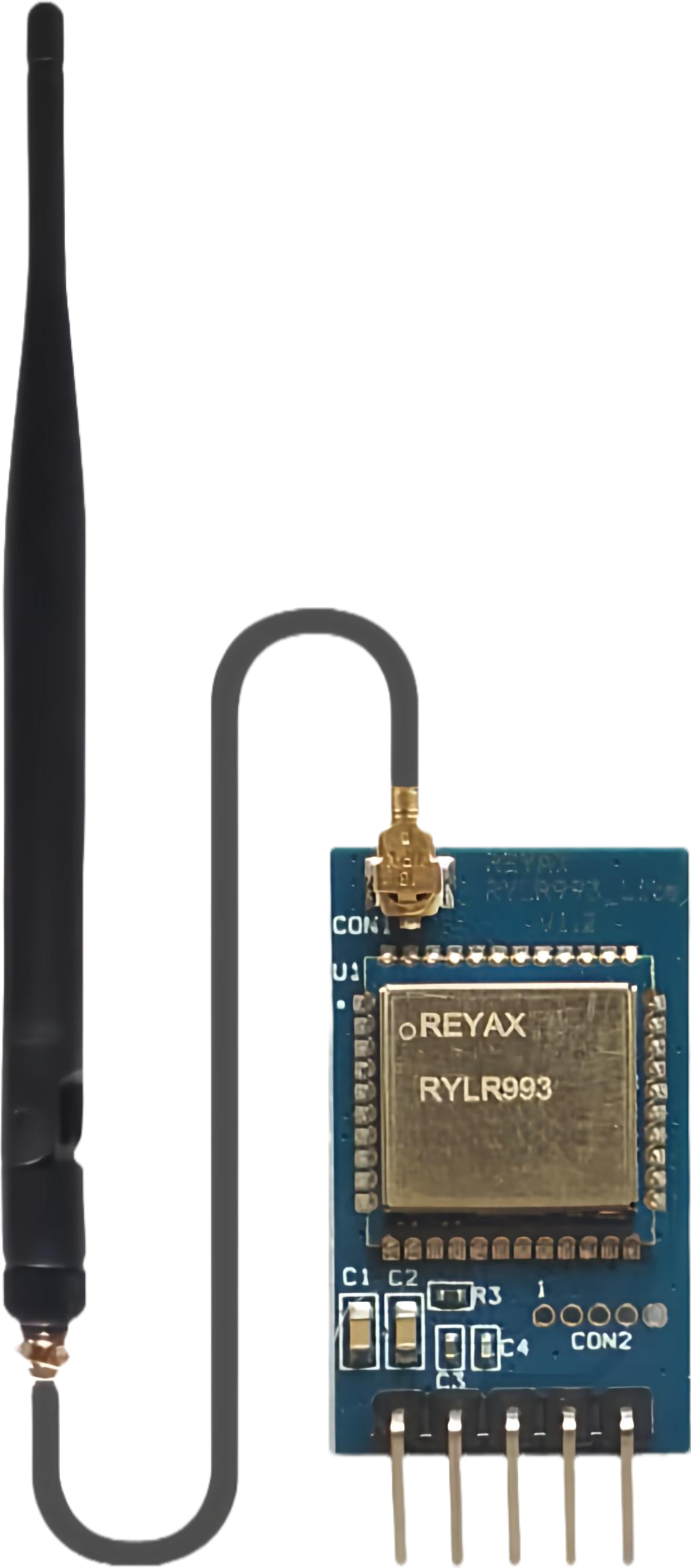
 Design with RYLR993_Lite in Cirkit Designer
Design with RYLR993_Lite in Cirkit DesignerIntroduction
The RYLR993_Lite is a low-power, long-range LoRa transceiver module manufactured by REYAX. It is designed for wireless communication in IoT applications, offering reliable data transmission over extended distances. Operating in the 433/868/915 MHz frequency bands, the RYLR993_Lite supports multiple data rates, making it ideal for applications such as remote sensing, industrial automation, smart agriculture, and home automation.
Explore Projects Built with RYLR993_Lite
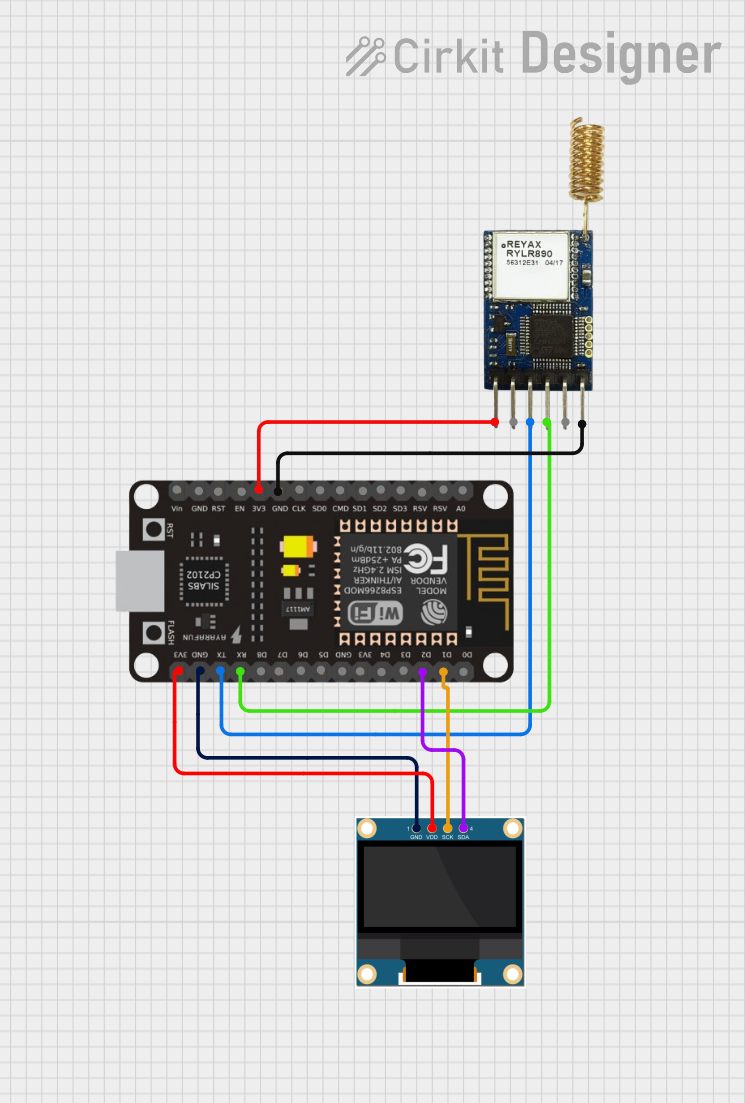
 Open Project in Cirkit Designer
Open Project in Cirkit Designer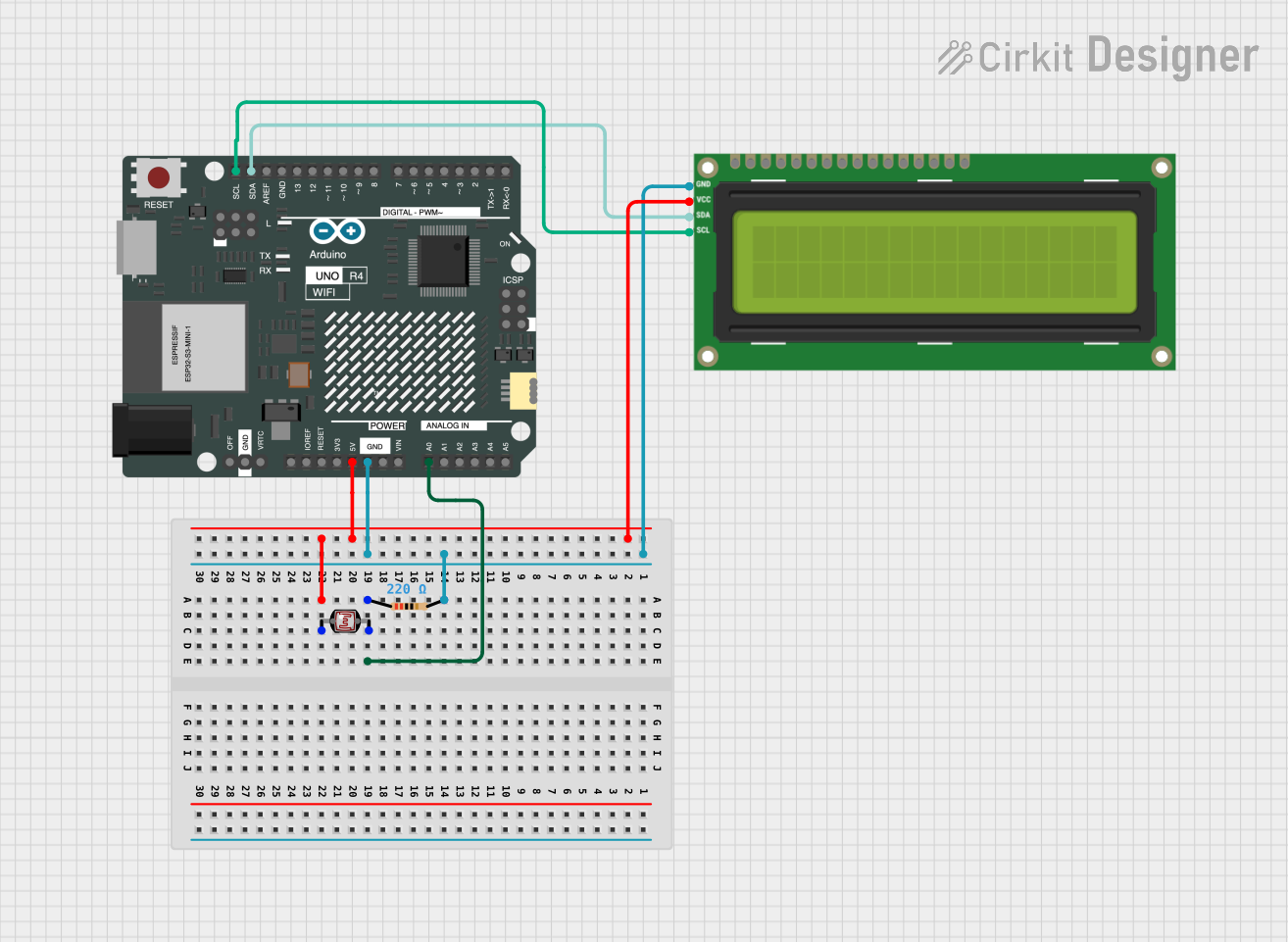
 Open Project in Cirkit Designer
Open Project in Cirkit Designer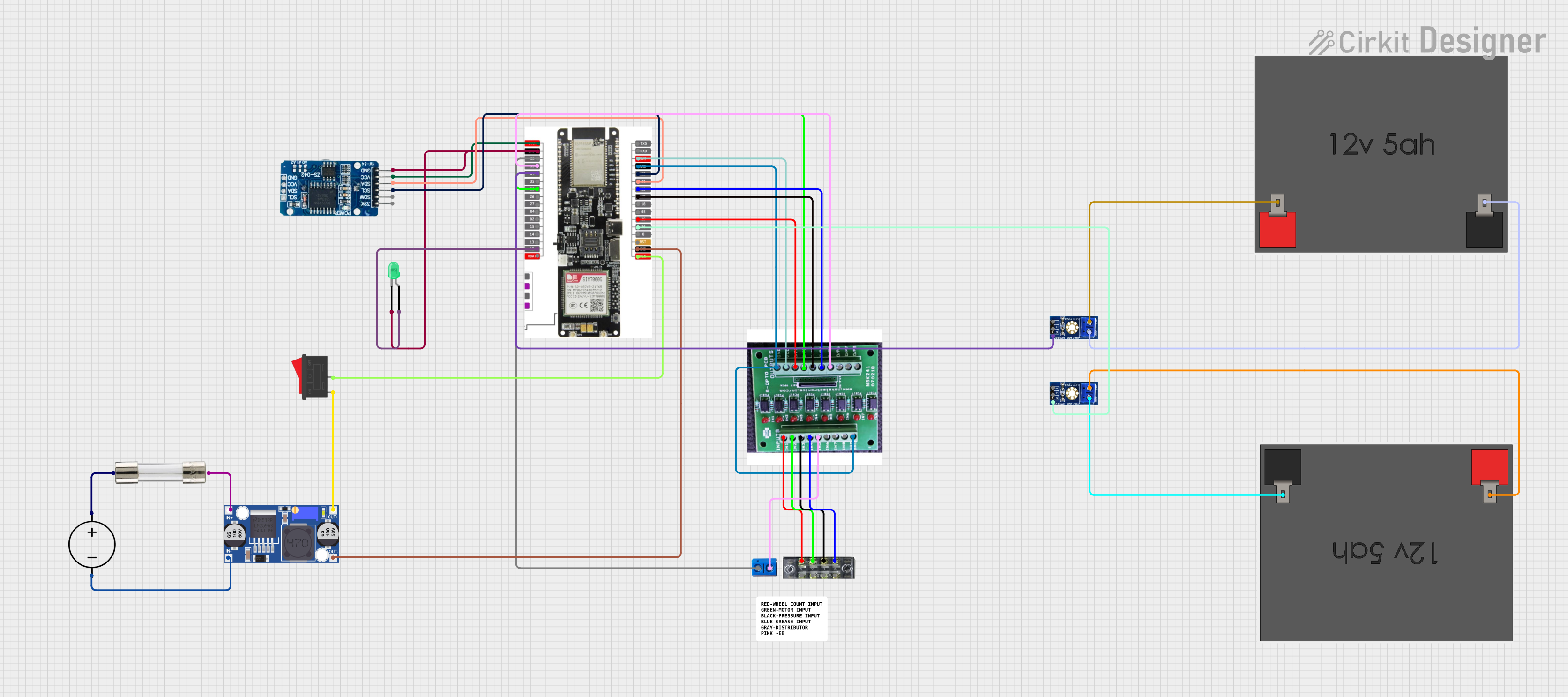
 Open Project in Cirkit Designer
Open Project in Cirkit Designer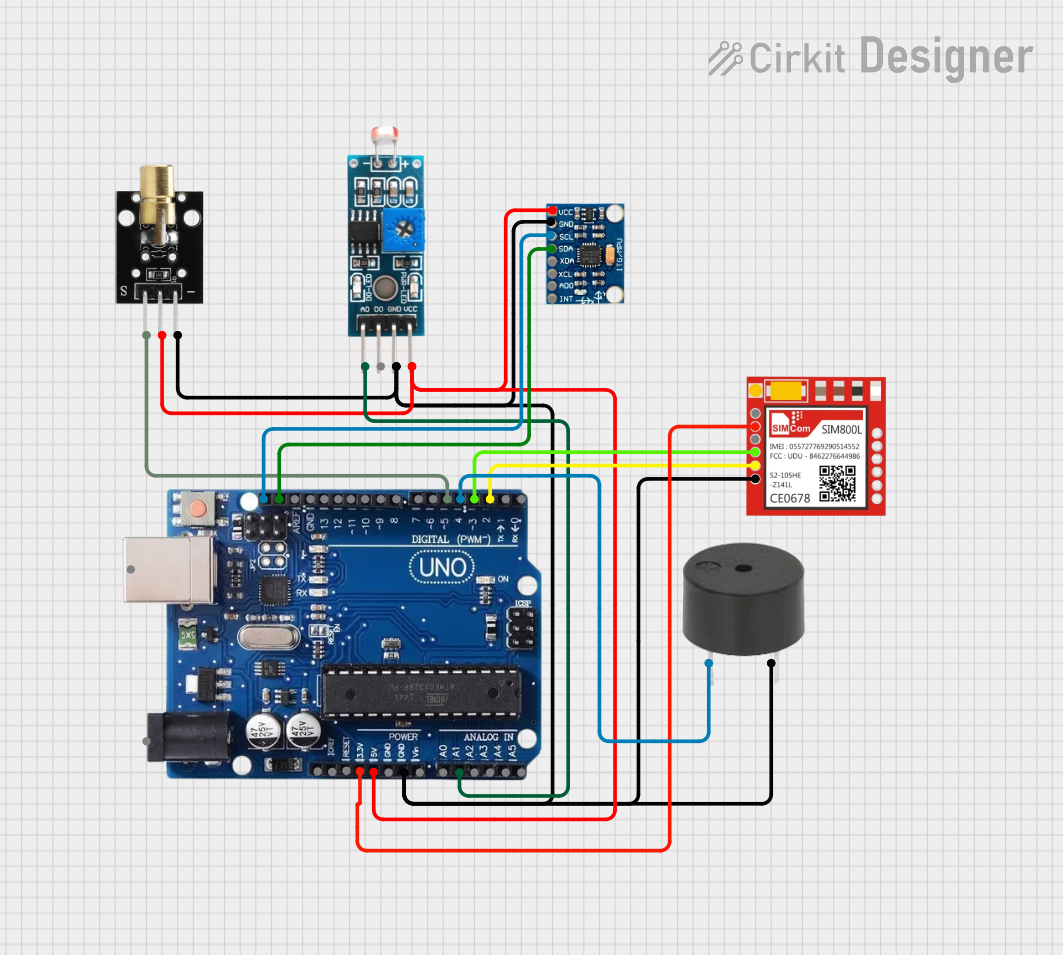
 Open Project in Cirkit Designer
Open Project in Cirkit DesignerExplore Projects Built with RYLR993_Lite

 Open Project in Cirkit Designer
Open Project in Cirkit Designer
 Open Project in Cirkit Designer
Open Project in Cirkit Designer
 Open Project in Cirkit Designer
Open Project in Cirkit Designer
 Open Project in Cirkit Designer
Open Project in Cirkit DesignerCommon Applications
- IoT Networks: Enables long-range communication between IoT devices.
- Remote Sensing: Ideal for monitoring environmental conditions in agriculture or industry.
- Smart Cities: Used in smart lighting, parking systems, and utility metering.
- Home Automation: Facilitates wireless control of smart devices.
- Industrial Automation: Provides robust communication in harsh environments.
Technical Specifications
Key Technical Details
| Parameter | Value |
|---|---|
| Frequency Bands | 433 MHz / 868 MHz / 915 MHz |
| Modulation Technique | LoRa (Long Range) |
| Communication Range | Up to 15 km (line of sight) |
| Data Rate | 0.3 kbps to 37.5 kbps |
| Operating Voltage | 2.8V to 3.6V |
| Operating Current | 10 mA (transmit), 0.1 µA (sleep mode) |
| Interface | UART (Universal Asynchronous Receiver-Transmitter) |
| Operating Temperature | -40°C to +85°C |
| Dimensions | 18 mm x 25 mm x 3 mm |
Pin Configuration and Descriptions
The RYLR993_Lite module has a total of 8 pins. Below is the pinout and description:
| Pin Number | Pin Name | Description |
|---|---|---|
| 1 | VCC | Power supply input (2.8V to 3.6V) |
| 2 | GND | Ground |
| 3 | TXD | UART Transmit (data output) |
| 4 | RXD | UART Receive (data input) |
| 5 | RESET | Module reset (active low) |
| 6 | WAKE | Wake-up pin for sleep mode |
| 7 | ANT | Antenna connection |
| 8 | NC | Not connected |
Usage Instructions
How to Use the RYLR993_Lite in a Circuit
- Power Supply: Connect the VCC pin to a 3.3V power source and the GND pin to ground.
- UART Communication: Connect the TXD and RXD pins to the UART pins of a microcontroller (e.g., Arduino UNO).
- Antenna: Attach a suitable antenna to the ANT pin for optimal signal transmission and reception.
- Reset: Use the RESET pin to restart the module if needed.
- Wake-Up: Use the WAKE pin to bring the module out of sleep mode.
Important Considerations
- Antenna Selection: Use a high-quality antenna tuned to the operating frequency (433/868/915 MHz) for maximum range.
- Power Supply: Ensure a stable 3.3V power supply to avoid communication issues.
- UART Settings: Configure the UART interface with the correct baud rate (default: 9600 bps).
- Environmental Factors: The communication range may vary depending on obstacles, interference, and weather conditions.
Example: Connecting to an Arduino UNO
Below is an example of how to use the RYLR993_Lite with an Arduino UNO for basic communication:
Circuit Connections
| RYLR993_Lite Pin | Arduino UNO Pin |
|---|---|
| VCC | 3.3V |
| GND | GND |
| TXD | Pin 10 (RX) |
| RXD | Pin 11 (TX) |
| RESET | Digital Pin 9 |
Arduino Code Example
#include <SoftwareSerial.h>
// Define RX and TX pins for SoftwareSerial
SoftwareSerial loraSerial(10, 11); // RX = Pin 10, TX = Pin 11
void setup() {
// Initialize serial communication
Serial.begin(9600); // For debugging via Serial Monitor
loraSerial.begin(9600); // For communication with RYLR993_Lite
// Send initialization command to the module
loraSerial.println("AT+ADDRESS=1"); // Set device address to 1
delay(100);
loraSerial.println("AT+NETWORKID=5"); // Set network ID to 5
delay(100);
loraSerial.println("AT+BAND=915000000"); // Set frequency to 915 MHz
delay(100);
Serial.println("RYLR993_Lite initialized.");
}
void loop() {
// Check for incoming data from the module
if (loraSerial.available()) {
String data = loraSerial.readString();
Serial.println("Received: " + data); // Print received data
}
// Send data to the module
if (Serial.available()) {
String command = Serial.readString();
loraSerial.println(command); // Send command to RYLR993_Lite
}
}
Troubleshooting and FAQs
Common Issues and Solutions
No Response from the Module
- Cause: Incorrect UART connections or baud rate mismatch.
- Solution: Verify the TXD and RXD connections and ensure the baud rate is set to 9600 bps.
Limited Communication Range
- Cause: Poor antenna quality or environmental interference.
- Solution: Use a high-gain antenna and minimize obstacles between devices.
Module Not Powering On
- Cause: Insufficient or unstable power supply.
- Solution: Ensure the power supply provides a stable 3.3V.
Data Loss or Corruption
- Cause: High noise levels or incorrect UART settings.
- Solution: Check the UART configuration and reduce interference sources.
FAQs
Q: Can the RYLR993_Lite operate on 5V?
A: No, the module requires a power supply of 2.8V to 3.6V. Use a voltage regulator if needed.Q: What is the maximum communication range?
A: The module can achieve up to 15 km in line-of-sight conditions. Obstacles and interference may reduce this range.Q: How do I reset the module?
A: Pull the RESET pin low for at least 100 ms and then release it.Q: Can I use the module with other microcontrollers?
A: Yes, the RYLR993_Lite can be used with any microcontroller that supports UART communication.
This concludes the documentation for the RYLR993_Lite. For further assistance, refer to the official datasheet or contact REYAX support.